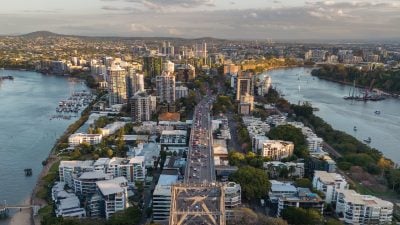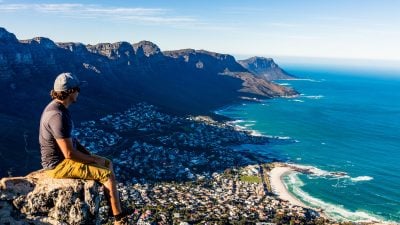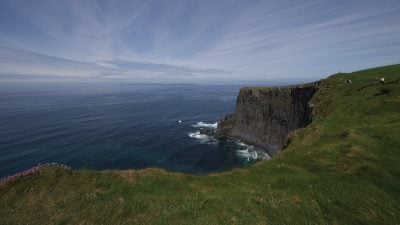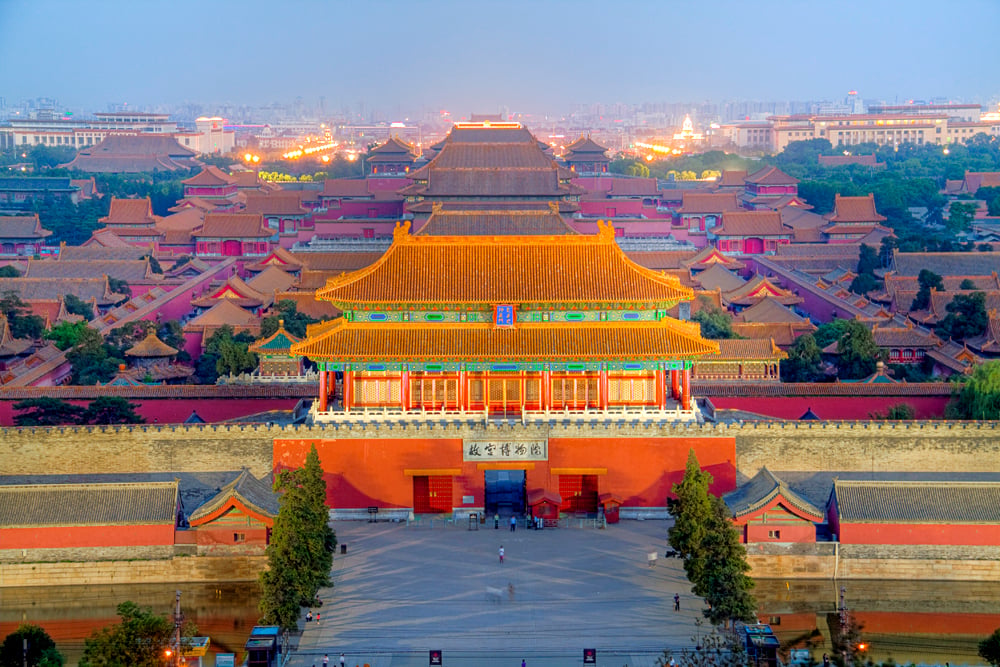
Beijing – The Starting Point on Your China Vacation
One of the world’s greatest cities, Beijing will bring to life a fascinating past and give you an excellent insight, on your China vacation, into the development of the Middle Kingdom… as the country has been called.
If you are planning a China vacation, I highly recommend starting in Beijing, for specific reasons. First, it is the capital city, offering culture and history galore. It is also the gateway to China, along with the city of Shanghai. However, Shanghai should probably be your last stop. By starting in Beijing and maybe continuing to other Chinese destinations, you, in a sense, move forward through history by ending your China tour in Shanghai, a city which epitomizes the culmination of centuries of evolution.
Beijing became China’s capital in 1421. Prior to that, other cities such as Xian and Nanjing held that title. So, it is no wonder that with almost 600 years of existence as the capital, Beijing’s historical legacy is on display.
Tian’An Men Square
Where do you start your exploration on your Beijing tour? Only one place makes sense and that is Tian’An Men Square. This is the world’s largest public square and has been home to both parades and riots. When standing in the square, you could be almost overwhelmed as you take in all the places that not only surround the square but also are in the centre of it. I suggest starting at the southern end at the Zhanyangmen Gate. Looking straight down the centre of the square, you can’t miss the Chairman Mao Memorial Hall which contains the Mao Tse Tung Mausoleum. You can go inside and view his embalmed body as he lies in state. Bear in mind two things though. No cameras and it is only open in the mornings. Also in the middle of the square is the Monument of the People’s Heroes, built in 1952. On the west side of the square is a very important and imposing building, The Great Hall of the People, the centre of political activity and the palace where many state banquets are held. The Great Auditorium holds 10,000 people and the Banquet Hall, 5000. On the east side is a similar building architecturally but not as big and this is the National Museum of China. Inside are exhibits which belong to a combination of the Chinese History Museum and the Chinese Revolution. The former has displays of cultural relics from ancient China up to the time of the abdication of the last Emperor of China in 1911, and the latter, the history of China over the last 150 years.
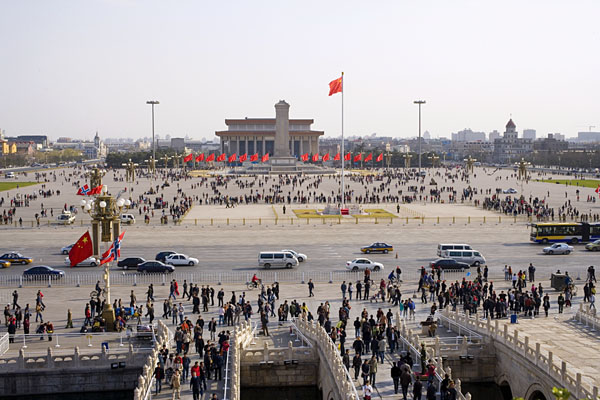
The Forbidden City
At the north end of the square is the entrance to the Forbidden City, also known as the Imperial Palace. The name comes from the fact that it was forbidden to enter without the permission of the Emperor. The Forbidden City is a vast complex and is ringed by a moat and a wall. It is something that takes up a complete half day to cover. The moment you enter, you are immediately transported back over the centuries as you find yourself standing at the edge of a very large square or courtyard unchanged for centuries. It is said this square could hold an audience of 100,000 people. Basically, you will visit a number of highlights within the Forbidden City before finding yourself at the far end and the exit.
The buildings or quarters of the emperors have delightful names. There is the Hall of Supreme Harmony, which is the most important building and was used for ceremonial occasions such as the Emperor’s birthday. It has the richly decorated Dragon Throne of the emperors. There is the Hall of Middle Harmony, where visitors were received and the Hall of Preserving Harmony used for banquets. Then there are two lesser buildings, Hall of Heavenly Peace and Hall of Terrestrial Peace. Another one is the Pavilion of Cheerful Melodies (don’t you just love it), a three-storey wooden opera house, which was the palace’s largest theatre. Besides these, there is the Treasure Gallery which consists of three buildings, the Hall of Spiritual Cultivation, the Hall of Joyful Longevity, which were all the living quarters for the Imperial Regent, the consorts, and the concubine, and the Belvedere of Well-Nourished Harmony. These three halls now house gold, silver, pearls, jade, utensils, tea services, imperial robes, a phoenix crown, and daily necessities, as well as furnishings of the Qing Dynasty Imperial family (1644-1911). Then there is the Hall of Clocks and Watches (also known as Museum of Clocks and Watches), an exhibition of wonderful clocks from the 18th century, to 20th Century gifts from both the Chinese and foreigners. Finally, there is the Imperial Garden, a classical landscaped garden with pavillions, rockeries, and paths to stroll along. Once you come out of the Forbidden City, it is necessary to take a deep breath and jump back into the world of today.

Olympic Sites
Talking of the present day, you might like to take the time to see the sites where some of the Olympic Games took place in 2008. If you watched the Games, you will not have forgotten the National Stadium (also known as Bird’s Nest), which is the world’s largest steel structure. I read that due to the lack of use for this stadium, it might be converted into a shopping and entertainment complex. The other unforgettable site is the Beijing National Aquatics Center (coined the Water Cube) where swimming and diving competitions took place.
Wangfujing
Deviating from actual sites, I would like to mention Wangfujing, a pedestrian thoroughfare which is Beijing’s best known shopping street. The shops here range from designer boutiques to food emporiums, and in the evenings, there is a night market where you can pick up bargains. The Foreign Language Bookstore has a good selection of guidebooks and maps.

The Great Wall of China, the Ming Tombs, and the Sacred Way
Now it’s time to head to the amazing Great Wall of China, a must, naturally, on your China vacation. I say “amazing” because of its location in the mountains and because, even though I have visited it on many occasions, I never tire of coming back to it. It is only around 80 kilometres/50 miles due north of Beijing. Although the complete wall, which is 2000 years old and thousands of kilometres/miles long, is mainly in a state of disrepair, certain sections have been preserved/restored so that you see the wall as it was in its early times. The most popular and possibly the best part of the wall is at Badaling, but it is a very popular and busy spot. The wall snakes over undulating and steep mountain ranges, somehow disappearing into eternity. You can walk quite a long way on the wall as long as you have the time and the energy. If you decide to walk on the wall, it involves climbing steps, some of which are quite steep. Stilettos are not advised. However, the view from the wall across the mountains is very rewarding. Another nearby section is at Mutianyu, which is less crowded usually and very scenic. It has a cable car to allow you to get onto the wall from below, without climbing steps. There are other places in the vicinity to see the wall but these two are the principal ones.
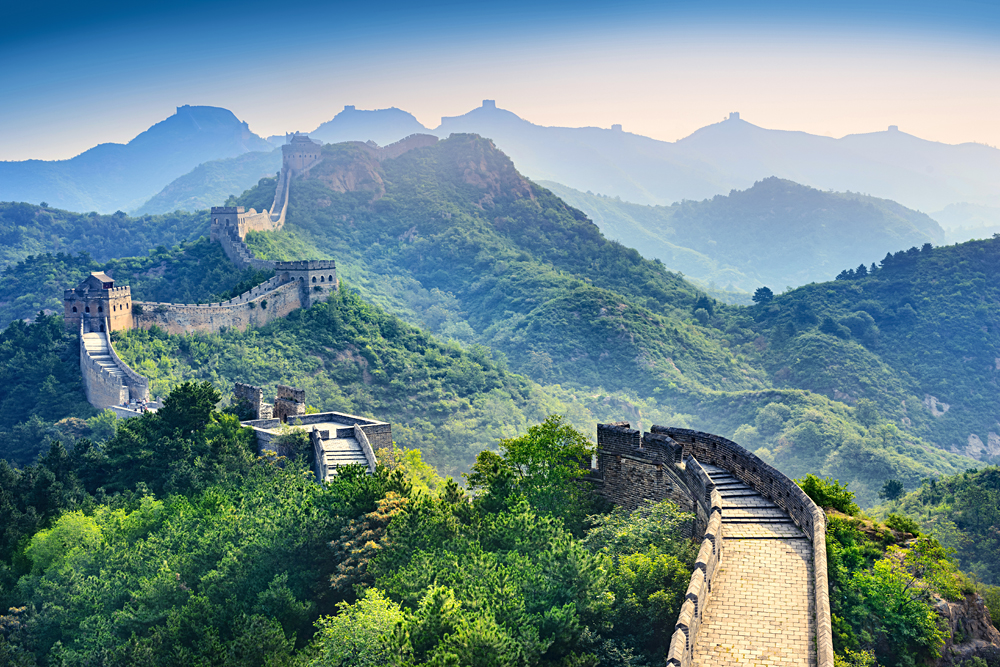
While in the vicinity of the Great Wall, it is worth visiting the Ming Tombs. These are the burial tombs of 13 of the Ming Dynasty Emperors (1316-1644). However, don’t expect too much. It is really the thought of all these special people being buried here. At present, only 3 tombs have been opened up and only one has been excavated. There is nothing to see as any relics or treasures have been removed to somewhere else, although there is a small museum on site. On my first visit to the Ming Tombs, I asked my guide why only one tomb had been excavated. He replied that the money which would be used to do this could be better spent on real needs like schools and hospitals. I don’t know if this is the reason but it does seem odd that the other tombs have not been opened up.
Along with the Ming Tombs, there is the nearby Sacred Way, well worth visiting. It is lined with large statues that are several hundred years old. These huge statues are mainly of lions, camels, elephants, and other animals. It was known as the “Way to Heaven” for the emperors.
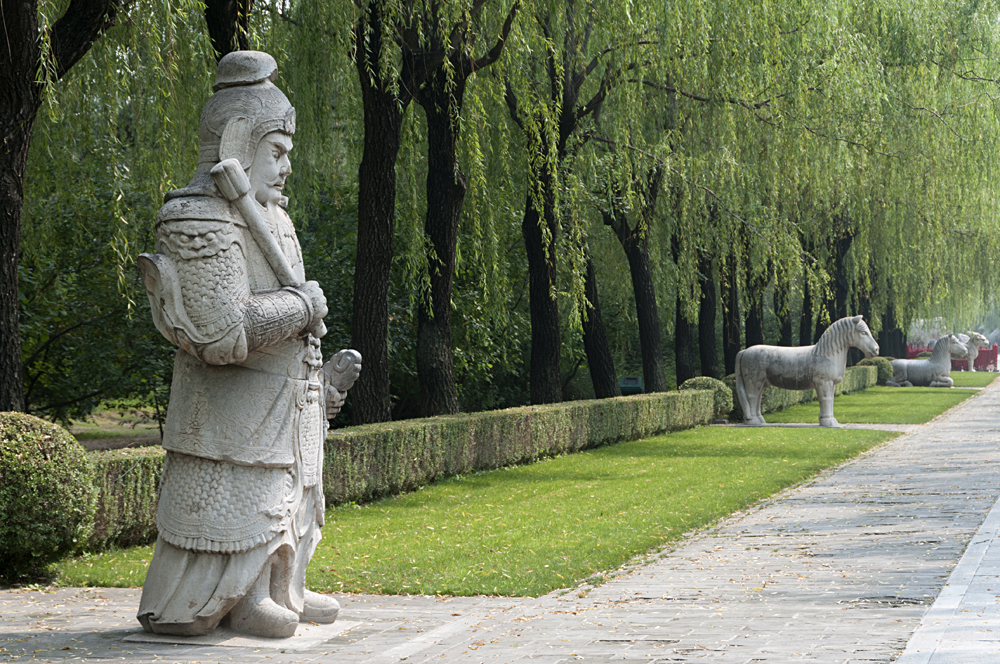
The Summer Palace
We all like to get away from the heat of the summer. The emperors were no different. They headed at this time to the Summer Palace, which is located on the outskirts of Beijing. The grounds consist of the palace, temples, gardens, pavillions, and a large ornamental lake which takes up about 75% of the area – all set in beautiful surroundings. Possibly the highlight is the Marble Boat, designed for the Empress Dowager, mother of the last Emperor. She had it made to her exact wishes, one of which was that it be made of marble and then, once finished, was told it was impossible to sail on the lake as the boat would immediately sink. So, today, it is still moored where it was placed in the lake. The main structure in the Summer Palace is the Hall of Benevolence and Longevity which contains a wooden throne and has a courtyard decorated with bronze animals. The surrounding hills are adorned with Buddhist temples, such as the Buddhist Temple of the Sea of Wisdom, and pavillions with extraordinary names such as the Buddhist Fragrance Pavilion and the Cloud Dispelling Hall. Other scenic places within the palace grounds include the Garden of Harmonious Interests, the Hall of Increasing Longevity, the Presence of Virtue Temple, and the Hall of Serenity.
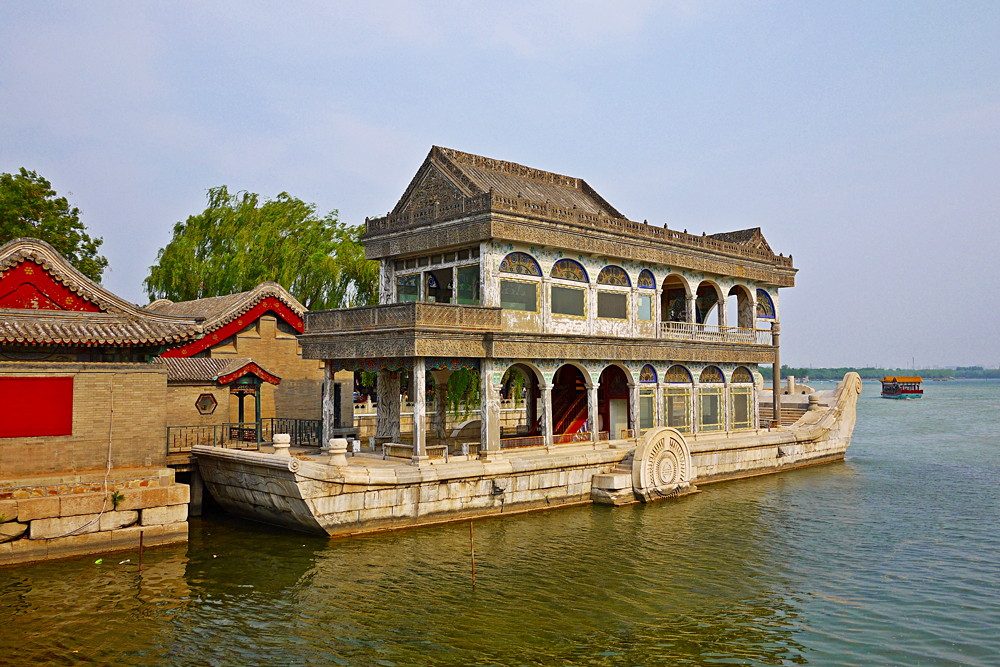
Temple of Heaven Park
The Temple of Heaven Park is a very large area which contains several religious structures. It is where the emperors came to worship. The Temple of Heaven itself is a stunning edifice and is better described by looking at a photograph, which will tell you just how ornate and colourful it is. The Hall of Prayer for Good Harvests is a magnificent circular building built on three levels, with a marble stone base where the emperors prayed for good harvests. The building is completely wooden, with no nails. In the park are over 60,000 varieties of trees with one being more than 500 years old called the Nine Dragon Cypress. You will find many locals enjoying activities here which include running, cycling, singing, dancing, playing chess, flying kites, and doing their Tai Chi exercises.
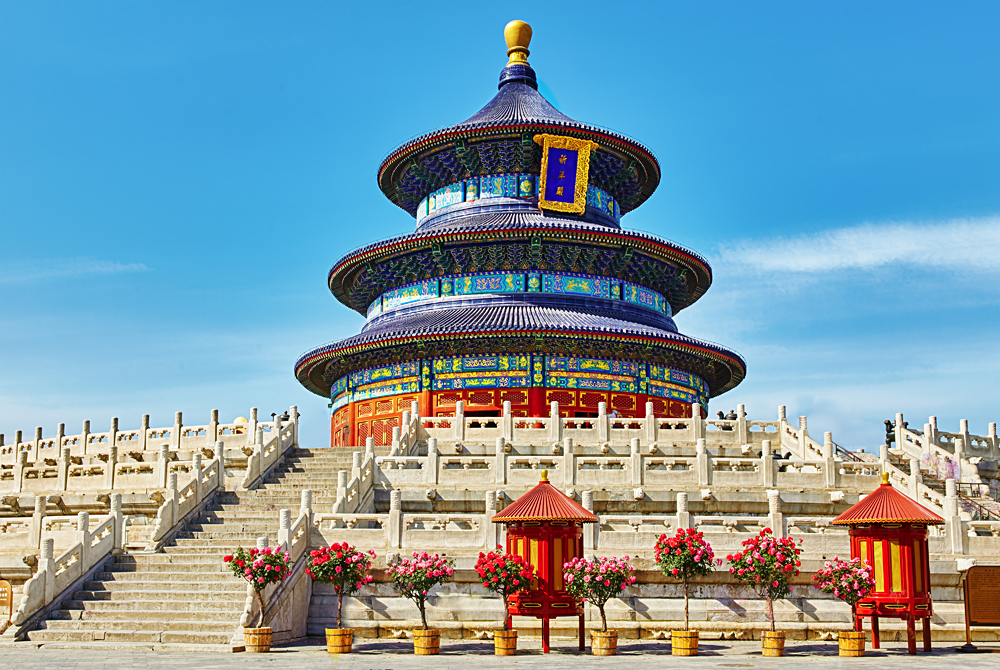
The Hutongs
Everywhere we turn these days, buildings are being torn down and replaced with modern structures. This is also the case in Beijing. Hutongs are ancient city alleys or lanes typical of Beijing in traditional neighbourhoods, with living quarters that go back as far as the 13th century and consist of narrow brick alleyways and courtyards. Sadly, 90% of the original structures have been destroyed, but luckily, many have been preserved. I have read that approximately 1000 still remain intact. One way to explore the Hutongs is to take a rickshaw ride through some of them. It is said that because of the closeness and solitude of the Hutongs, everyone communicates with their neighbours, which is certainly not the case in high-rise buildings. Apart from dwellings, there are also shops in the Hutongs selling all kinds of merchandise.
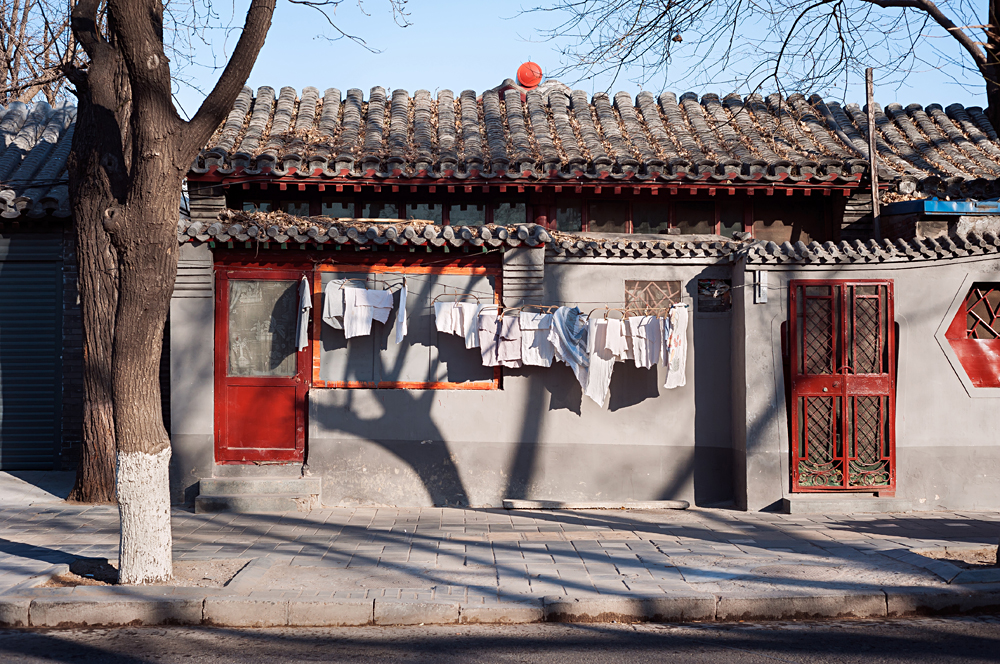
Sanlitun
It is in the Foreign Embassy district that you will find Sanlitun. This is an area for excellent shopping, restaurants, and entertainment. It developed as the first place in Beijing for nightlife. There are a wealth of bars for the thirsty plus many clubs and discotheques. Many of the bars and restaurants here are frequented by foreigners. It is said that more than 40% of the bars in Beijing are located in the Sanlitun area.

798 Art District
Art enthusiasts on a China vacation will love visiting the 798 Art District. It is Beijing’s principal collection of contemporary art galleries located in a once industrial complex from the 1950s. The large former factory workshops are ideally suited to multimedia installations and other ambitious projects. Some of the larger galleries include the 798 Art Factory, a hangar-like space with its ceiling decorated in 1950’s Maoist slogans. The original machinery is scattered among the changing art exhibitions by Chinese and foreign artists alike. The Danish gallery, Faurschou Foundation Beijing, has exhibitions by internationally acclaimed artists. Shows have included Lucien Freud, Ai Wei Wei, Andy Warhol, and Yoko Ono. The Springs Center of Art also exhibits well-known artists from both China and overseas. There are other numerous galleries here which all need time to do justice to them.

Beijing has many other interesting sites and landmarks, but by visiting most of the above, you will feel you have “discovered” the real Beijing on your China vacation.
Get more travel inspiration by email.
Subscribe
0 Comments

Get the latest travel trends & hear about the best deals on vacations around the world.
If you’re a Globetrotter, these are the newsletters for you!

